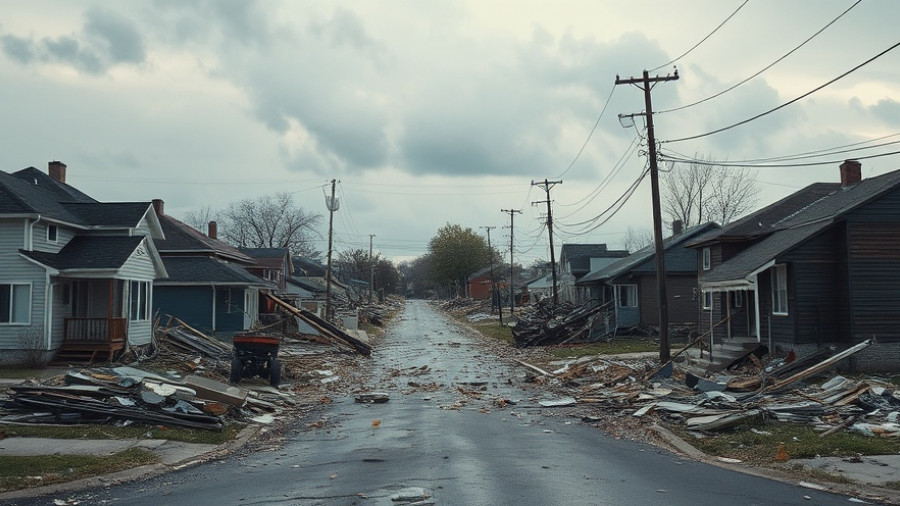
Hurricane Erin: A Brewing Threat Along the East Coast
As Hurricane Erin churns off the coast, the impending danger it poses is forcing New York City to take precocious measures by closing beaches to protect its residents. Warnings from city officials indicate that the hurricane is not just a localized threat but rather a storm that could impact beachgoers from Miami to Maine.
The Impact of Hurricane Erin on Coastal Safety
The National Hurricane Center reports that Hurricane Erin has intensified into a Category 2 storm, with maximum sustained winds reaching up to 160 mph. The storm system is expected to create perilous conditions along the Eastern coastline, reaching a dangerous crest with rip currents that could sweep even the strongest swimmers away from the shore. As the warm summer waters beckon, local authorities are urging swimmers to resist temptation, citing the potential for rising tides and treacherous surf.
Understanding Rip Currents: A Hidden Danger
Rip currents are among the most significant threats associated with storms like Erin. These fast, narrow channels of water flow away from the shore and can be deceptively powerful, posing serious risks to swimmers. Authorities advise beachgoers to familiarize themselves with how to spot and avoid rip currents. Essential tips include swimming near lifeguards, and if caught in a rip current, swimming parallel to the shore until free of the current's grip.
Community Response: Emergency Preparedness Measures
In anticipation of the storm's impact, areas like North Carolina have already implemented a "double red flag day," which explicitly bans ocean swimming in response to hazardous conditions. Authorities are also offering evacuation information and have declared states of emergency in various beach towns. Community leaders are proactively sharing safety protocols, advising residents and visitors alike to heed evacuation alerts and stay informed about potential storm developments.
The Broader Impact on Coastal Communities
This hurricane's arrival comes during a peak season when beach tourism is typically at its height. Local economies dependent on summer foot traffic will face substantial losses as beach closures deter visitors. Coastal residents from New Jersey to Maine are grappling with the combined impact of natural disaster preparedness and economic viability.
Weather Forecast and Future Predictions
As the storm progresses, meteorologists predict that Hurricane Erin may fluctuate in intensity, further complicating the forecast. With a powerful storm of this magnitude, understanding the trajectory and potential migration patterns becomes crucial for coastal towns. Waves along south-facing beaches could reach up to 13 feet, prompting officials to extend safety measures well into the week. It’s essential for residents and vacationers to remain vigilant as the situation evolves.
Final Thoughts: A Call for Caution
With hurricane season presenting increased risks, the crucial takeaway is the importance of vigilance and preparedness. While the temptation of warm ocean water is enough to attract many visitors, the stakes are far too high to ignore. As Hurricane Erin approaches, the call to action is simple: stay informed, respect safety warnings, and prioritize personal safety over summer fun.
While these beach closures may feel inconvenient, they are essential for safeguarding lives. Authorities are clear on this message, making it necessary for all coastal residents and travelers to be responsible.
What You Can Do
In addition to staying safe, consider how you can help your community through challenges posed by such natural disasters. Engage with local emergency services to stay informed, volunteer when possible, and support local businesses when safe to do so. Being aware and proactive can make a significant difference in navigating the unpredictability of nature.
 Add Row
Add Row  Add
Add 




Write A Comment